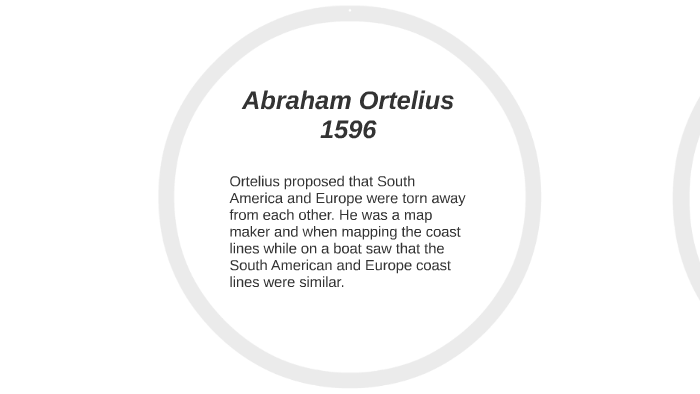

Financial Accounting: Building Accounting Knowledge (Carlon Shirley Mladenovic-mcalpine Rosina Kimmel).Macroeconomics (Olivier Blanchard Alessia Amighini Francesco Giavazzi).Marketing-Management: Märkte, Marktinformationen und Marktbearbeit (Matthias Sander).Fundamentals of Aerodynamics (John David Anderson).Contemporary World Politics (Shveta Uppal National Council of Educational Research and Training (India)).Frysk Wurdboek: Hânwurdboek Fan'E Fryske Taal Mei Dêryn Opnommen List Fan Fryske Plaknammen List Fan Fryske Gemeentenammen.Oral and Maxillofacial Pathology (Douglas D.IT(Intermediary Guidelines and Digital Media Ethics Code) Rules, 2021 English.Electrical Properties of Materials Mod-1.15EC35 - Electronic Instrumentation - Module 3.Science club and the aims and objectives of science club in school.
#Abraham ortelius hypothesis evidence manual
CS8581 Networks Lab Manual valliammai (annauniversityedu.37708004 Tally 9 Voucher Entry Questions.
#Abraham ortelius hypothesis evidence pdf

In 1888, Yarkovski was the first to postulate a growth of the Earth mass. Drayson published his book The Earth We Inhabit: Its past, present, and probable future in which he speculated that the Earth had undergone an expansion over time. What Wegener and others failed to recognise was that, as well as fitting the South American and African coastlines together to come up with a reasonably approximate continental fit- together, the remaining Indian, Pacific, and Southern Ocean coastlines can just as easily be fitted together, with similar fossil and geological evidence to support the observations.ĭuring the 19th and 20th centuries there were a number of additional independent thinkers who considered opening of the oceans could be attributed to an increase in Earth radius. Wegener went further to suggest that the present continents once formed a single, what is now referred to as the “Pangaean land mass”-which is the ancient supercontinent called Pangaea-that subsequently broke up and drifted apart. In 1915 Alfred Wegener also noted how the east coast of South America and the west coast of Africa looked as if they were once joined. For evidence he wrote: “The vestiges of the rupture reveal themselves, if someone brings forward a map of the world and considers carefully the coasts of the three continents.”

Ortelius suggested, based on the symmetric outlines of the Atlantic coastlines, that the Americas, Europe, Asia, and Africa were once joined and have since drifted apart “…by earthquakes and floods”, creating the modern Atlantic Ocean. The suggestion that continents have not always been at their present positions was introduced as early as 1596 by the Dutch map maker Abraham Ortelius.


 0 kommentar(er)
0 kommentar(er)
